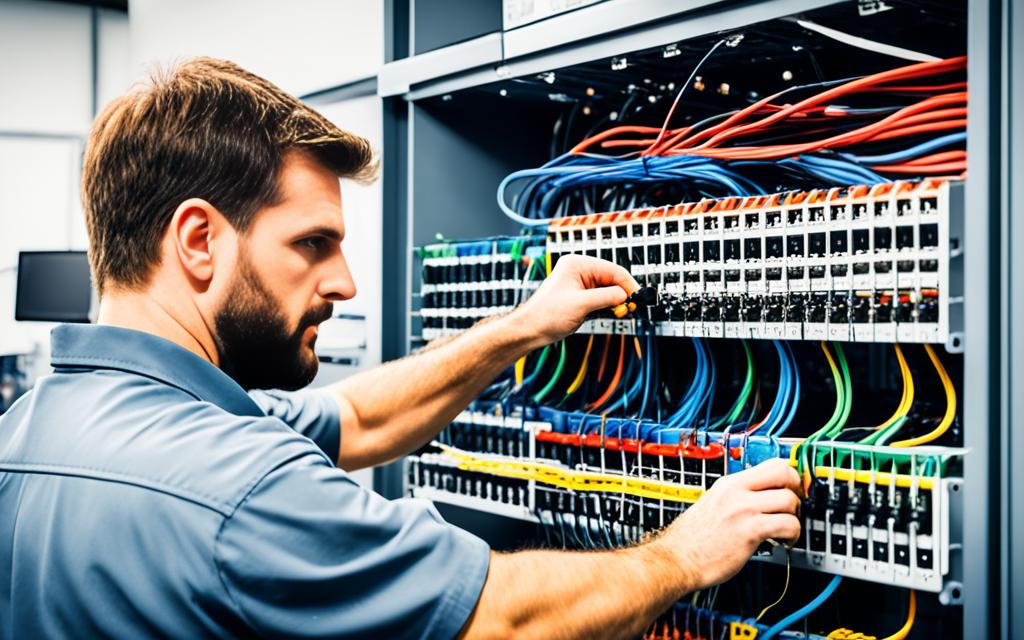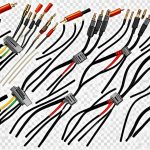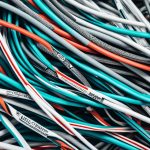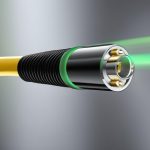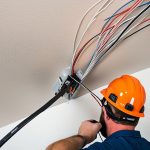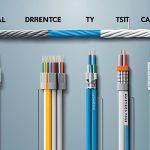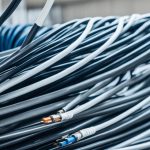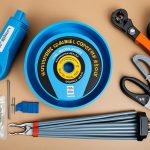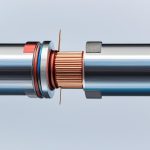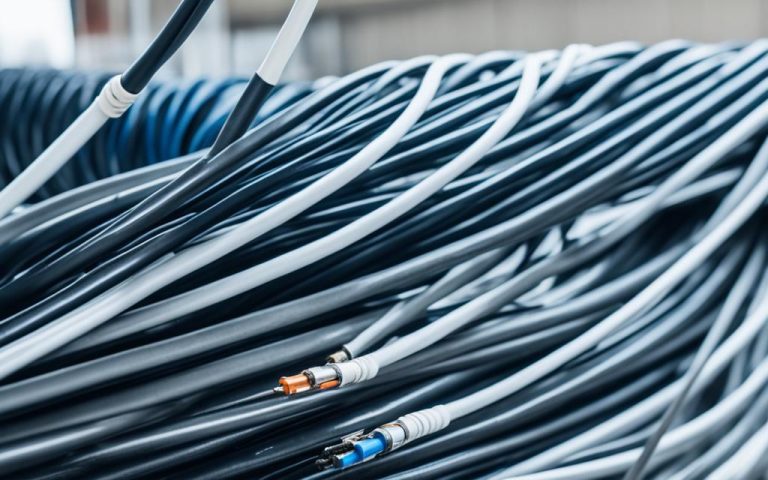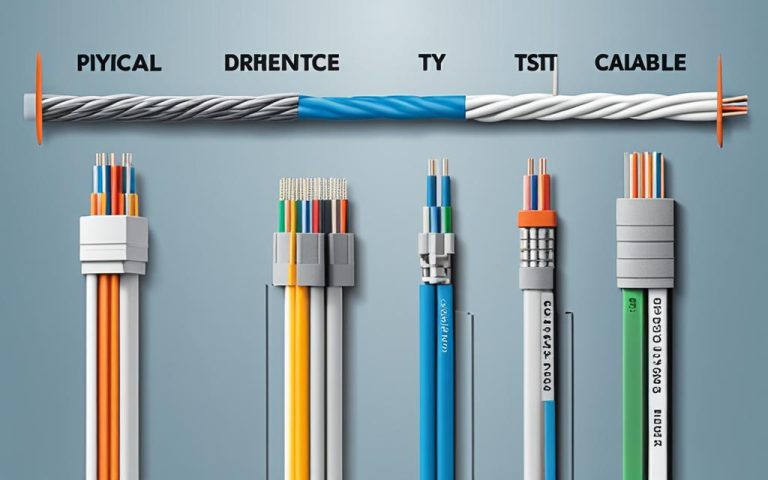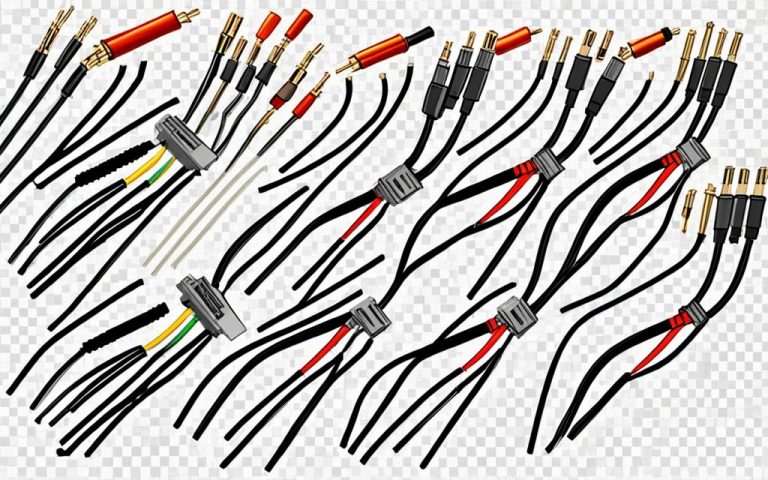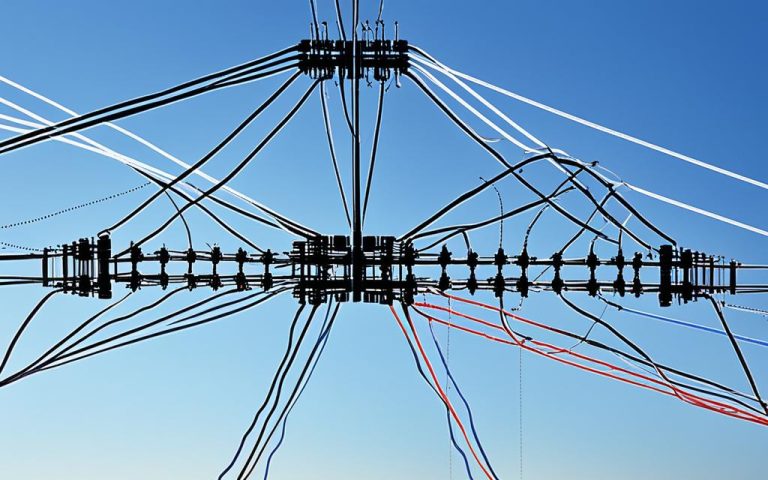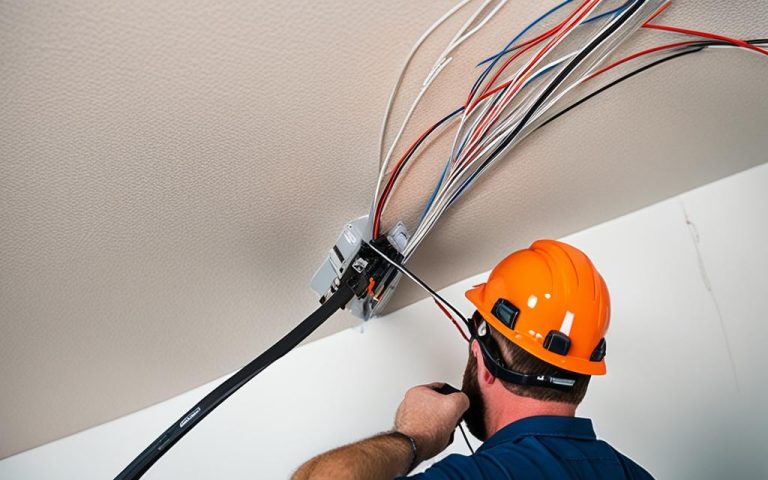Cabling installation and management play a vital role in optimizing the performance of coaxial cable networks. A well-designed network infrastructure relies on efficient cabling solutions to ensure seamless communication and high-speed data transfer. By following industry standards, businesses can harness the full potential of their network infrastructure.
Proper cabling installation involves meticulous planning and adherence to industry best practices. This includes selecting the appropriate cables, assembling hardware components, and implementing effective cable management strategies. The aim is to achieve optimal network performance, minimize interference, and ensure reliability.
To facilitate successful cabling installation and management, the use of the right tools and materials is crucial. Cable cutters, crimpers, patch cords, and surface mount boxes are among the essential tools required for the job. These tools enable technicians to handle cables with precision and efficiency, resulting in a well-organized and robust cabling infrastructure.
Furthermore, businesses must focus on long-term performance by considering the selection of high-quality cables, using proper hardware assembly techniques, and practicing efficient cable management strategies. By investing in structured cabling solutions and following industry standards, businesses can optimize their network performance and adapt to future technology advancements.
In the following sections, we will explore the tools, materials, and best practices for effective coaxial cable installation and management. We will also discuss structured cabling solutions that offer optimal performance and reliability for modern networks.
Stay tuned for practical tips and expert advice to enhance your coaxial cable network management.
Tools and Materials for Coaxial Cable Installation and Management
Proper tools and materials are crucial for the successful installation and management of coaxial cables. By using the appropriate tools, individuals can ensure efficient and reliable cabling installation, minimizing the risk of downtime and data loss. Moreover, choosing high-quality materials contributes to the overall performance and longevity of the network infrastructure.
The Essential Tools for Coaxial Cable Installation
Coaxial cable installation requires a set of reliable tools to handle various tasks. The following tools are commonly used:
- Cable cutters: These tools are designed specifically for cutting coaxial cables, ensuring clean and precise cuts.
- Crimpers: Crimpers are essential for attaching connectors to coaxial cables securely.
- Punch-down tools: Punch-down tools are used to terminate cables onto connectors or patch panels.
- Cable strippers: Cable strippers help remove the outer insulation of coaxial cables safely, exposing the inner conductor.
- Power drills: Power drills are necessary for drilling holes and creating cable pathways during installation.
- Screwdrivers: Screwdrivers are used to assemble connectors and other hardware components during cable installation.
- Labels: Labels are important for identifying and organizing cables, facilitating easy troubleshooting and maintenance.
Mandatory Materials for Coaxial Cable Installation
In addition to the tools mentioned above, certain materials play a crucial role in the installation process. The following materials are commonly used:
- Patch cords: Patch cords come in different sizes and lengths and are used to connect network devices.
- Surface mount boxes: Surface mount boxes or wall plates provide secure and organized connections for coaxial cables in walls or other surfaces.
Using high-quality materials and tools ensures a stable and robust network infrastructure, minimizing the risk of downtime and maximizing performance.
| Tool | Function |
|---|---|
| Cable cutters | Clean and precise cutting of coaxial cables |
| Crimpers | Secure attachment of connectors to coaxial cables |
| Punch-down tools | Termination of cables onto connectors or patch panels |
| Cable strippers | Safely remove the outer insulation of coaxial cables |
| Power drills | Create holes and cable pathways during installation |
| Screwdrivers | Assemble connectors and other hardware components |
| Labels | Identify and organize cables for easy troubleshooting |
Network Cabling System Installation Best Practices
Successful network cabling system installation requires expertise in various aspects, including hardware assembly, cable selection, interference prevention, downtime prevention, and cable management. By following best practices, businesses can ensure a robust and reliable network infrastructure.
Cable Selection: Selecting the right cables is crucial for optimal network performance. High-quality cables should be chosen to ensure protection from interference, improved signal quality, and stability over long distances. It is essential to consider factors such as cable type, shielding, and bandwidth requirements based on the environment and intended usage.
Hardware Assembly: The installation process involves assembling various hardware components, including routers, switches, patch panels, and outlets. This step requires specialized tools and techniques to ensure proper connection and functionality. Careful attention must be paid to cable terminations and connections to avoid signal loss, data corruption, or downtime.
Interference Prevention: Interference can significantly impact the performance of a network. Utilizing high-quality cables, proper grounding techniques, and shielding methods can help minimize interference from external sources, such as electromagnetic fields or other electronic devices. This ensures a stable and reliable network connection.
Downtime Prevention: Poor cable management can lead to downtime and network disruptions. Implementing effective cable management strategies after installation is crucial for preventing issues caused by poor connections, cable damage, or inadequate bandwidths. Proper cable organization, routing, and labeling can greatly simplify troubleshooting, maintenance, and upgrades.
Cable Management: Cable management involves organizing and maintaining the cables to ensure optimal performance and longevity. It includes practices such as cable routing, bundling, and securing cables to prevent tangling, accidental unplugging, or damage. Using cable management solutions, such as cable trays, racks, or labels, can greatly enhance the overall organization and ease of maintenance.
Increase network reliability and performance with proper network cabling system installation and management. Choose high-quality cables, utilize specialized tools, and implement effective cable management strategies to prevent interference, downtime, and ensure long-term stability.
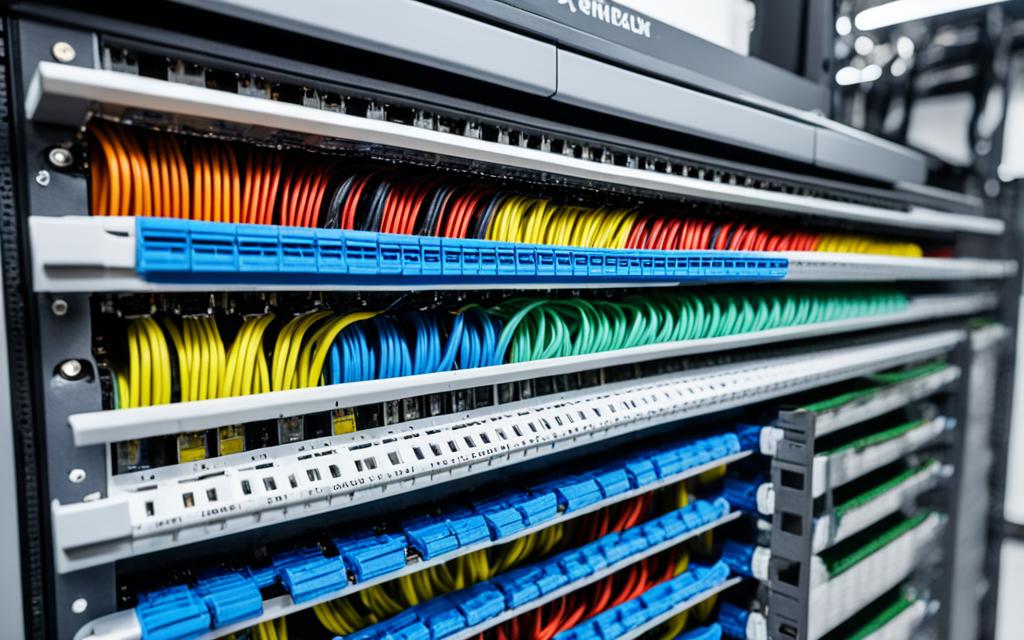
| Benefits of Best Practices in Network Cabling Installation |
|---|
| 1. Enhanced network performance |
| 2. Minimized signal interference |
| 3. Reduced risk of downtime |
| 4. Improved cable organization and management |
Structured Cabling Solutions for Optimal Performance
Structured cabling installation forms the foundation of a business’s network, providing reliable and secure connections between devices. To ensure optimal performance and reliability, it is crucial to use high-quality components sourced from reputable vendors. The key components of an effective structured cabling solution include physical cables, patch panels, racks, and switches.
Physical cables play a vital role in transmitting data signals accurately and efficiently. It is important to select cables that meet industry standards and can handle the specific requirements of the network infrastructure. Proper cable management, including cable labeling and documentation, simplifies identification and maintenance, reducing potential downtimes and enhancing troubleshooting processes.
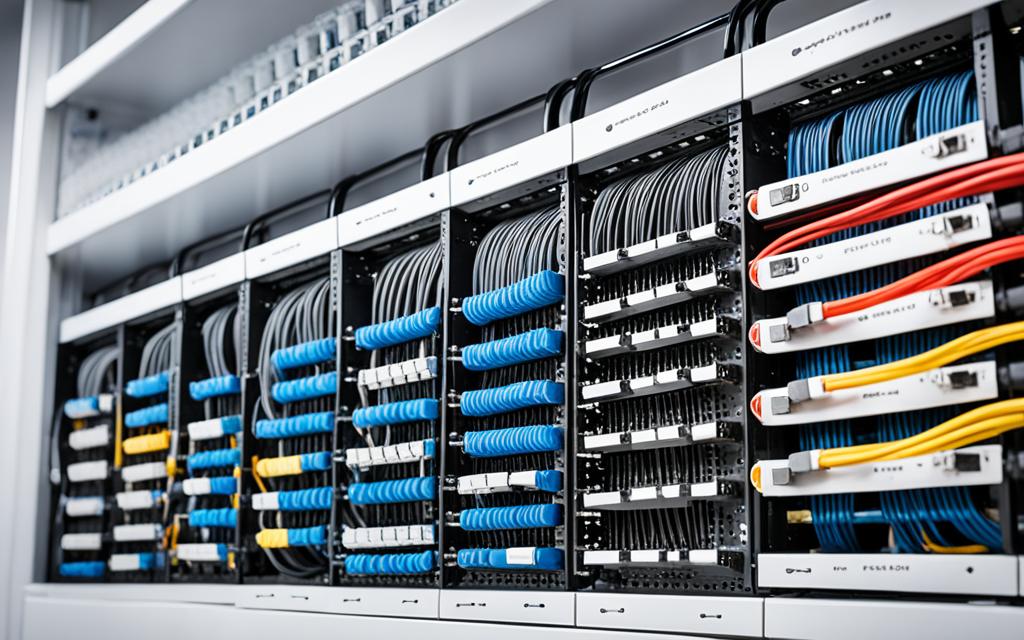
Structured cabling installation provides businesses with a scalable and adaptable network infrastructure. It allows for streamlined maintenance and future expansion while optimizing data transfer and connectivity.
Patch panels are essential for organizing and managing network connections. They serve as central points for connecting various devices, simplifying cable management and facilitating easy troubleshooting. Racks offer a secure and structured environment for housing networking equipment, ensuring proper airflow and accessibility. Switches, the central hub of network communication, enable efficient data routing and distribution.
Investing in structured cabling solutions not only improves network performance but also allows businesses to adapt to changing needs with ease. By utilizing high-quality components, practicing effective cable labeling and documentation, businesses can optimize their data networks and minimize potential disruptions.
Conclusion
Effective coaxial cable management plays a critical role in optimizing network performance. By implementing proper cabling installation techniques, selecting high-quality cables, and adopting cable management strategies such as cable organization and labeling, businesses can enhance data transfer efficiency, minimize interference, and mitigate the risk of downtime or data loss.
Investing in structured cabling solutions and adhering to industry best practices are essential for ensuring the long-term success of a network infrastructure. By prioritizing efficient coaxial cable management, businesses can establish fast, reliable, and secure data networks that support their operational needs.
Whether it’s managing cable organization, implementing effective labeling systems, or adopting appropriate cable management strategies, it is crucial to give due attention to coaxial cable management. By doing so, businesses can optimize network performance, eliminate workflow disruptions, and achieve seamless data communication across their operations.
FAQ
What is the importance of proper cabling installation and management techniques for coaxial cable networks?
Proper cabling installation and management techniques are crucial for optimizing the performance of coaxial cable networks. They ensure reliability, consistency, high-speed transmissions, and minimal interference.
What tools and materials are necessary for effective coaxial cable installation and management?
The basic tools include cable cutters, crimpers, punch-down tools, cable strippers, power drills, screwdrivers, and labels. Various materials are also necessary, such as patch cords and surface mount boxes or wall plates.
How do you select the best cable type for network cabling system installation?
The selection of the best cable type depends on the environment and intended usage. High-quality cables should be used to ensure greater protection from interference, improved signal quality, and stability over long distances.
What are the key components of structured cabling solutions for a business network?
The key components of structured cabling solutions are the physical cables, patch panels, racks, and switches. Investing in high-quality components from reputable vendors ensures optimal performance and reliability.
Why is effective coaxial cable management important for network performance?
Effective coaxial cable management, including proper cabling installation techniques, high-quality cables, and cable organization and labeling strategies, ensures efficient data transfer, minimizes interference, and reduces the risk of downtime or data loss.

